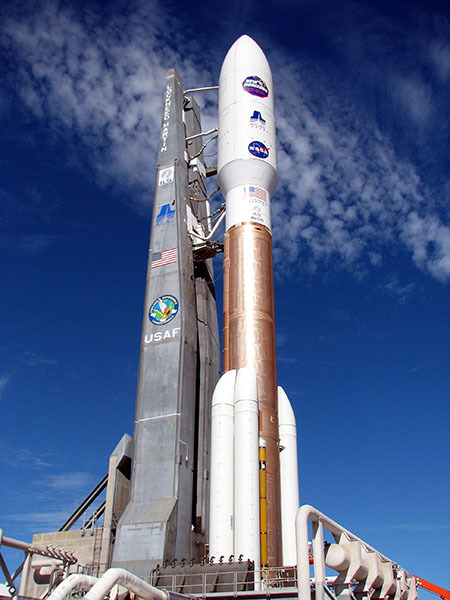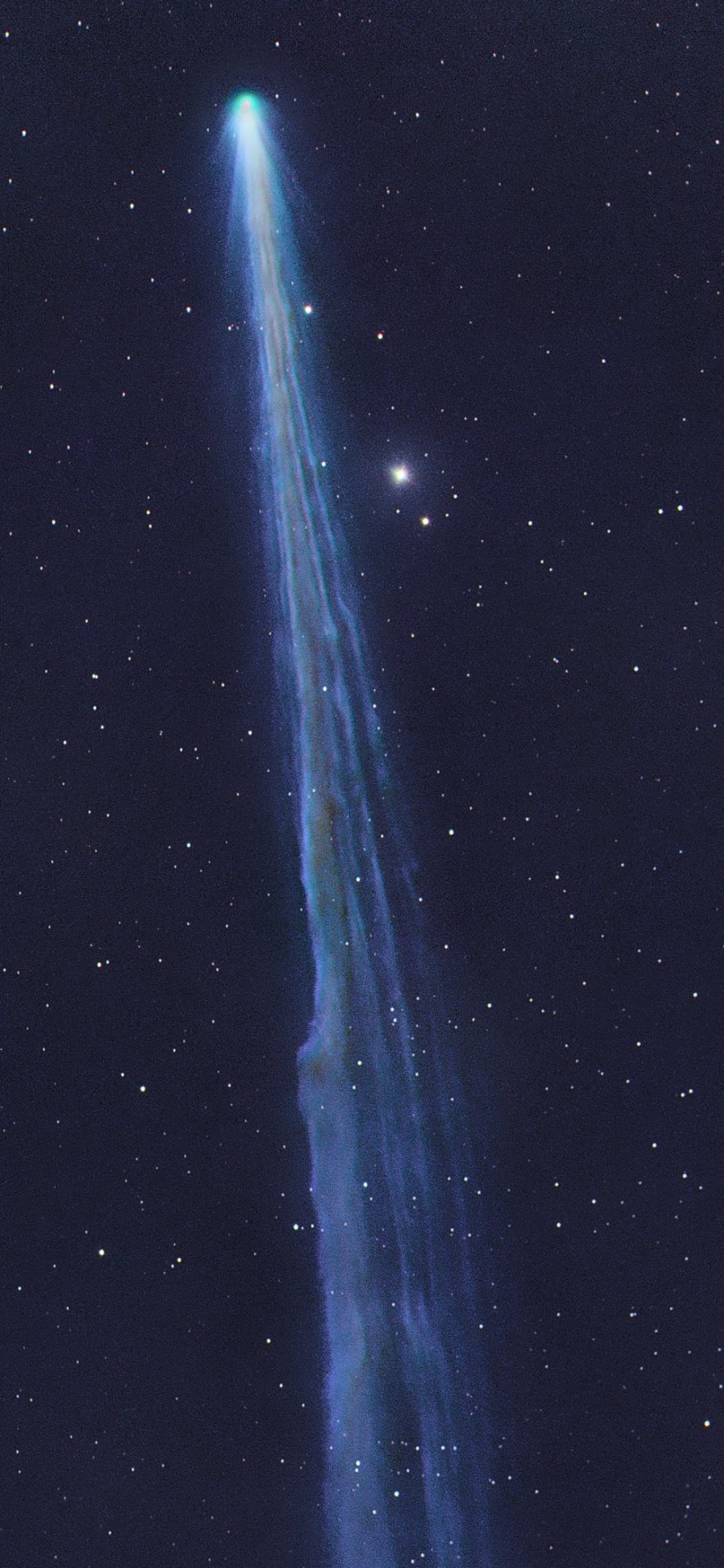Neptune's Rings & Moon Triton © Voyager 2

Neptune's rings & moon Triton © Voyager 2
More Posts from Ad-astra-affecte-spe and Others

L1527 IRS - Protostar
Stars form when bodies of dust and gas create enough mass to create a gravitational effect that's able to then pull in more gas, the process continues and the mass increases until the pressure at the centre is sufficient for fusion to begin.
There's many examples of protostars, in fact back in 2012, NASA’s Spitzer Space Telescope focused in on L1527 IRS, believed at the time to be the youngest forming star ever found.

Recently, the JWST re-visited this protostar, and the title image was the result.
The forming star cannot be visually spotted, but is thought to be around 20-40% the mass of our own Sun already.

If you look closely, you can see there's a dark patch in the centre, this is actually the accretion disk around the newly formed star, what is left over after the formation, may go on to form the planets, in fact, they may be actually starting to be created already, as recent evidence does point to planets being born around the same time as the star does in many cases.
The protostar is only 450 light years from Earth in the Constellation of Taurus, and is thought to be around 100,000 years old, a blink of an eye in the life of a star, particularly of this mass.


Whirlpool Galaxy M51a was the very first galaxy classified as a spiral galaxy.

The monsters that live on the Sun are not like us. They are larger than the Earth and made of gas hotter than in any teapot. They have no eyes, but at times, many tentacles. They float. Usually, they slowly change shape and just fade back onto the Sun over about a month. Sometimes, though, they suddenly explode and unleash energetic particles into the Solar System that can attack the Earth. Pictured is a huge solar prominence imaged almost two weeks ago in the light of hydrogen. Captured by a small telescope in Gilbert, Arizona, USA, the monsteresque plume of gas was held aloft by the ever-present but ever-changing magnetic field near the surface of the Sun. Our active Sun continues to show an unusually high number of prominences, filaments, sunspots, and large active regions as solar maximum approaches in 2025.







New Horizons – Scientist of the Day
The New Horizons spacecraft, bound for Pluto, blasted off its launch pad aboard an Atlas V rocket on Jan. 19, 2006.
read more...

Neptune's rings & moon Triton © Voyager 2

Today’s “Ring of Fire” eclipse. from, Bryce Canyon National Park.
Credits: NPS Photo/Peter Densmore.
-
 inyourfavouritedarkness liked this · 2 weeks ago
inyourfavouritedarkness liked this · 2 weeks ago -
 imageness-retro reblogged this · 2 weeks ago
imageness-retro reblogged this · 2 weeks ago -
 imageness-retro liked this · 2 weeks ago
imageness-retro liked this · 2 weeks ago -
 amchrisha liked this · 1 month ago
amchrisha liked this · 1 month ago -
 partyfaster reblogged this · 1 month ago
partyfaster reblogged this · 1 month ago -
 h-uny liked this · 1 month ago
h-uny liked this · 1 month ago -
 lonelyonlinegirl liked this · 1 month ago
lonelyonlinegirl liked this · 1 month ago -
 777divineintervention liked this · 1 month ago
777divineintervention liked this · 1 month ago -
 nocturnalhoney reblogged this · 1 month ago
nocturnalhoney reblogged this · 1 month ago -
 brownsugarbellini liked this · 1 month ago
brownsugarbellini liked this · 1 month ago -
 eretilfaf reblogged this · 1 month ago
eretilfaf reblogged this · 1 month ago -
 eretilfaf liked this · 1 month ago
eretilfaf liked this · 1 month ago -
 downthebeatenpath reblogged this · 1 month ago
downthebeatenpath reblogged this · 1 month ago -
 unjoursouslacanopee reblogged this · 1 month ago
unjoursouslacanopee reblogged this · 1 month ago -
 xilaolim reblogged this · 1 month ago
xilaolim reblogged this · 1 month ago -
 xilaolim liked this · 1 month ago
xilaolim liked this · 1 month ago -
 ap-ollus reblogged this · 1 month ago
ap-ollus reblogged this · 1 month ago -
 bidibombidibom reblogged this · 1 month ago
bidibombidibom reblogged this · 1 month ago -
 flamingstairway reblogged this · 1 month ago
flamingstairway reblogged this · 1 month ago -
 abdullaheb reblogged this · 1 month ago
abdullaheb reblogged this · 1 month ago -
 flamingstairway liked this · 1 month ago
flamingstairway liked this · 1 month ago -
 pac-aleau liked this · 1 month ago
pac-aleau liked this · 1 month ago -
 balchoth liked this · 1 month ago
balchoth liked this · 1 month ago -
 aelffy reblogged this · 1 month ago
aelffy reblogged this · 1 month ago -
 honeybunnygt liked this · 1 month ago
honeybunnygt liked this · 1 month ago -
 frei-nah reblogged this · 2 months ago
frei-nah reblogged this · 2 months ago -
 frei-nah liked this · 2 months ago
frei-nah liked this · 2 months ago -
 mexican-wedding-cookies liked this · 2 months ago
mexican-wedding-cookies liked this · 2 months ago -
 nymphetish6 reblogged this · 2 months ago
nymphetish6 reblogged this · 2 months ago -
 jeslilas reblogged this · 2 months ago
jeslilas reblogged this · 2 months ago -
 imyourmum reblogged this · 2 months ago
imyourmum reblogged this · 2 months ago -
 imyourmum liked this · 2 months ago
imyourmum liked this · 2 months ago -
 lueursoiree reblogged this · 2 months ago
lueursoiree reblogged this · 2 months ago -
 lifeof-ty reblogged this · 2 months ago
lifeof-ty reblogged this · 2 months ago -
 spookybrunettegirl reblogged this · 2 months ago
spookybrunettegirl reblogged this · 2 months ago -
 edalynn liked this · 2 months ago
edalynn liked this · 2 months ago -
 tsuchiman liked this · 2 months ago
tsuchiman liked this · 2 months ago -
 spheresofdesire liked this · 2 months ago
spheresofdesire liked this · 2 months ago -
 mapletides liked this · 2 months ago
mapletides liked this · 2 months ago -
 logical-haunting liked this · 2 months ago
logical-haunting liked this · 2 months ago -
 vi-xl reblogged this · 2 months ago
vi-xl reblogged this · 2 months ago -
 vi-xl liked this · 2 months ago
vi-xl liked this · 2 months ago -
 dreamyvixen reblogged this · 2 months ago
dreamyvixen reblogged this · 2 months ago -
 dreamyvixen liked this · 2 months ago
dreamyvixen liked this · 2 months ago -
 greyvvardenfell reblogged this · 2 months ago
greyvvardenfell reblogged this · 2 months ago -
 pr0jectt0ast reblogged this · 2 months ago
pr0jectt0ast reblogged this · 2 months ago -
 4ngelc0res reblogged this · 2 months ago
4ngelc0res reblogged this · 2 months ago

★•Astronomy, Physics, and Aerospace•★ Original and Reblogged Content curated by a NASA Solar System Ambassador
204 posts



